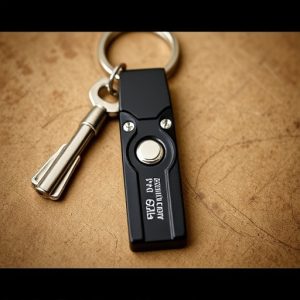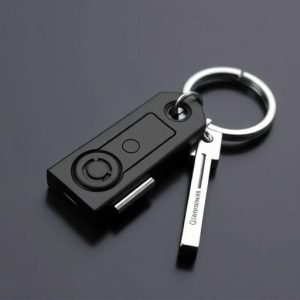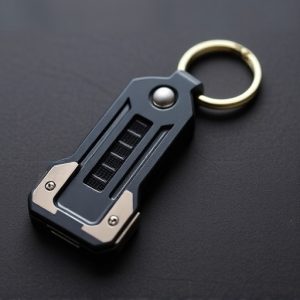Navigating Legal Limits: Safe Keyring Weapons for Personal Protection
When considering a keyring personal protection tool, it's crucial to understand local laws on t…….
When considering a keyring personal protection tool, it's crucial to understand local laws on the Prohibited Keychain Weapons List. This list restricts items capable of causing harm, including specific types of knives and sharp-tipped devices. Even seemingly harmless tools can be prohibited if they pose serious risks. Always check local regulations to ensure compliance and avoid legal issues when choosing a compact self-defense tool for walks.
Staying safe while walking is paramount. While many opt for traditional self-defense tools, a lesser-known option gaining traction is the keyring personal protection tool. However, understanding legal limitations is crucial before equipping yourself. This article delves into what makes certain keychain weapons prohibited, explores the effectiveness of popular keyring tools, and provides a comprehensive guide to navigating your local laws, ensuring you stay within legal boundaries. For those seeking options, it’s essential to know where to find legitimate self-defense solutions while adhering to the law, especially when considering a Prohibited Keychain Weapons List.
- Understanding Legal Limitations: What Makes a Weapon on a Keychain Prohibited?
- Choosing the Right Personal Protection: Keyring Tools and Their Effectiveness
- A Comprehensive Guide to Your Local Laws: Carry with Confidence
Understanding Legal Limitations: What Makes a Weapon on a Keychain Prohibited?
When considering a keyring personal protection tool, it’s crucial to understand the legal limitations surrounding prohibited keychain weapons. Not all objects designed for self-defense are illegal, but there are strict regulations on what constitutes a weapon. The definition of a weapon varies by jurisdiction, but generally, any object capable of causing harm or injury can be subject to restrictions.
The Prohibited Keychain Weapons List typically includes items like pocket knives with certain blade lengths, switchblades, and any device designed for sharp-tipped attack or defense. It’s important to note that even seemingly harmless tools can fall into this category if they can cause serious harm. Therefore, when choosing a keyring self-defense tool, ensure it complies with local laws and doesn’t feature prohibited components.
Choosing the Right Personal Protection: Keyring Tools and Their Effectiveness
Choosing the right personal protection tool is crucial, especially when heading out for a walk. One option gaining popularity is the keychain self-defense tool. These compact devices offer an easy-to-carry solution for those seeking to enhance their safety while on the move. However, it’s essential to understand that not all keychain weapons are created equal, and users should familiarize themselves with local laws regarding prohibited keychain weapons.
The effectiveness of these tools lies in their ease of use and accessibility. Keyring self-defense devices often come with a variety of features like sharp points or edges designed to deter attackers. They can fit comfortably on a key chain, making them effortless to carry without drawing attention. This subtlety is beneficial for individuals who prefer a discreet approach to personal protection. Moreover, their small size allows them to be easily stored in pockets or bags, ensuring they’re within reach when needed.
A Comprehensive Guide to Your Local Laws: Carry with Confidence
Before considering a keychain personal protection tool for your walks, it’s crucial to understand your local laws regarding prohibited keychain weapons. Each jurisdiction has its own set of regulations governing self-defense devices, and carrying a concealed weapon—even in a compact form like a keychain—can be subject to strict rules. A comprehensive guide to these laws is essential for carrying with confidence and ensuring you stay within legal boundaries.
Researching the Prohibited Keychain Weapons List specific to your region is the first step. This list typically includes items like Tasers, pepper spray, and certain types of knives or stun guns. Always check if your local authorities have any additional restrictions or requirements for carrying self-defense devices. Understanding these laws will not only protect you from legal repercussions but also help you make an informed decision about the right personal protection tool for your needs.
When considering a keyring personal protection tool for walking, understanding legal limitations is paramount. Familiarize yourself with your local laws regarding prohibited keychain weapons and choose a device that offers effective protection without compromising legality. A comprehensive guide can help you navigate these regulations, ensuring you carry with confidence. Remember, the right tool can provide peace of mind in unpredictable situations, but always prioritize safety and adhere to legal boundaries.


